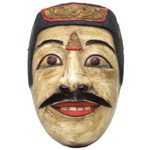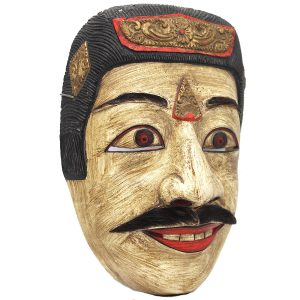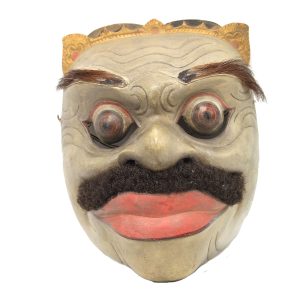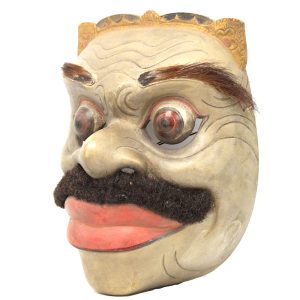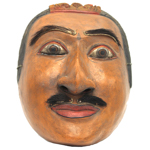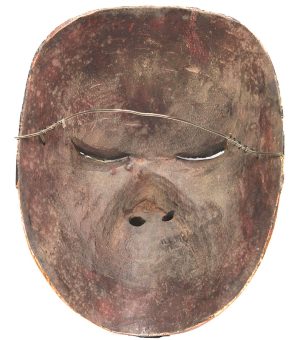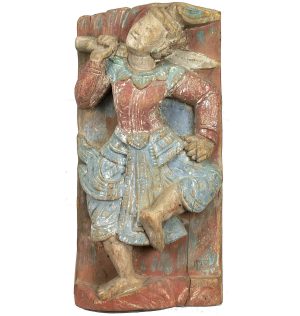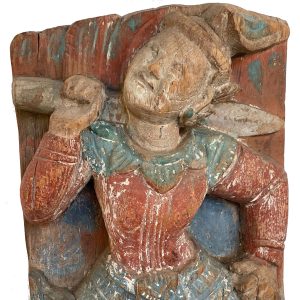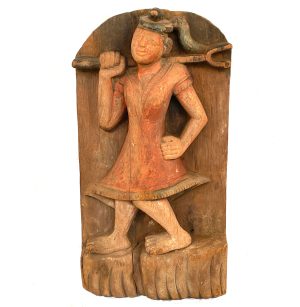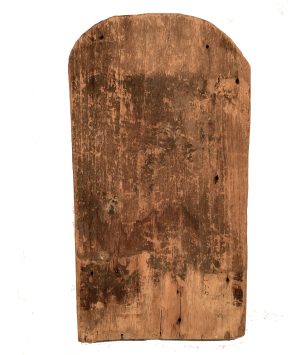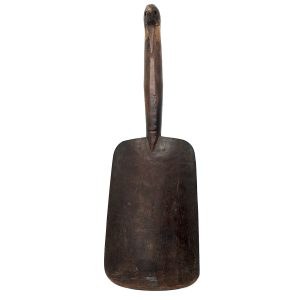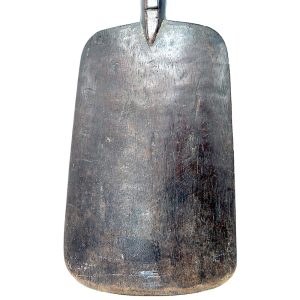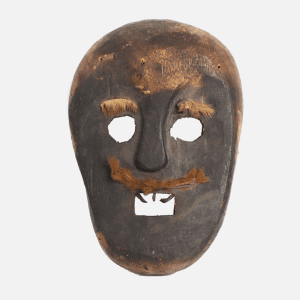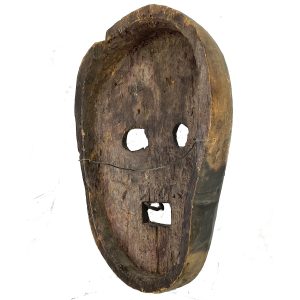Showing 205–216 of 221 results
-


$105.00
All ethnic mask (topeng) dances in Bali are accompanied with music from a gamelan percussion orchestra as are dramas and other entertainments considered as offerings to honor, please and attract the favor of the gods and ancestral spirits. In the west dancers put on masks to pretend they are someone else. Balinese dancers become the…
-


$125.00
There are two traditional Balinese masks of the king’s prime minister (topeng patih). Both are refined, well-bred warriors from the second caste holding a prestigious position, and, like all dance masks, they are accompanied by a gamelan. This mask is a patih keras (strong minister) which is usually red or orange symbolizing a tough, intense…
-


$125.00
Court ministers (patih) in Bali, Indonesia are danced in mask (topeng) performances named Topeng Panjegan where a single dancer interprets 5 legendary characters wearing full face masks, cannot speak and much portray them only through gestures and body language and positions. Patih manis (literally sweet, a good natured, diplomatic minister) is often the first solo…
-


$125.00
This is Kebo Taruna mask a powerful historical Balinese minister (patih) from the 14th century. Considered a folk-art, Hindu-cultural-and-ritual-art, ethnic art and offerings to the gods, masks are danced in a historical drama with the music of a percussion orchestra (gamelan). Balinese-masks are carved using a light durable wood called pulai that enhances pigments and…
-


$185.00
H: 10.5” Dia: 4.25″ | FREE SHIPPING WITHIN CONTINENTAL U.S.!
Made in Pagan this miniature hsun ok demonstrates the remarkable sense of design of Burmese wood carvers. It is crafted in two separate parts and replicates the shape of larger hsun-Ok, which traditionally have covers with spired lids topped by elegant finials that imitate the soaring outline of Burmese stupa finials. This modest piece has circular tiers repeated on the foot and the stupa finial top.
-


$335.00
Traditional Burmese dance has its roots in folk religion and is a combination of ancient animism, nat worship and a later syncretic blend with Buddhism. Ethnic minorities often perform dances that include warriors , Zawgyi (shaman) and nats wielding swords or holding drums while dressed in full-body costumes. Burmese performances were regulated with limitations on…
-


$335.00
Burmese women always have taken part in demanding strenuous work, but they rarely see themselves as farmers. This is because of Burma’s old patriarchal culture, narrow Burmese laws and social limitations of rural beliefs that define them as workers who labor for men: their father, brother or husband. This wonderful painted folk-art wood panel of…
-


$335.00
Burmese women always did strenuous work, yet they rarely see themselves as farmers. This is due to Burma’s old patriarchal culture, Burmese laws and narrow rural beliefs defining them as workers laboring for men only: their father, brother or husband. This wonderful painted wood panel of a barefoot female farmer depicts her with the long…
-


$240.00
Ht: 9.75″ W: 3.5″ D: 2.5″ | FREE SHIPPING WITHIN CONTINENTAL U.S. !
This Chinese Republic Period delicate porcelain figurine holds a rose at her heart in her right snow white hand, her left arm covered by her shawl resting on a waist-high decorative vase with an opening to hold incense (joss) sticks. Her shawl drapes over her shoulders and lower garment with floral motifs extending to the beaded belt at her waist. The sweet facial expression with slightly smiling bowed lips is framed by her piled hair looped in a chignon over each ear. Given her luxurious garments and accessories, she is an aristocratic woman. The rose was often used on porcelains during this period, representing eternal spring.
-


$115.00
This vintage Indonesian rice paddle/spoon was crafted from local wood by a Lombok craftsman and is a fine example of the cultural art of the Sasak people who number three million and comprise about 80% of its population. As animism farmers for two millennia, they lived in houses surrounding religious compounds where they held religious…
-


$395.00
This rare folk art Rangda mask was made on the island of Lombok, Indonesia by ethnic Balinese Hindu craftsman. Primarily Muslim, a Balinese Hindu minority ruled the island from 1750-1895 and Hindu temples (pura) have been centers for Balinese activities since the 17th century. Balinese girls are encouraged to “dance with their hands” and formal…
-
Sale!


$495.00 Original price was: $495.00.$325.00Current price is: $325.00.
H: 12.5″ W: 8.625″ D: 2.75″ | FREE SHIPPING IN CONTINENTAL U.S.!
Timor masks like this are rare and characterized by large roughly cut eyes, the absence of some teeth and the remaining ones being menacing. They are stored in the rafters above the house hearth accounting for their smoky black color. Often decorated with animal hide with hair, the facial pieces have either not darkened fully in the rafters or, when placed on top of each other, did not darken evenly. Frequently a bit threatening due to the black color, missing teeth and their frequent lack of balance, these ancestral masks are used in offering rituals designed to drive off malevolent spirits.
End of content
End of content

